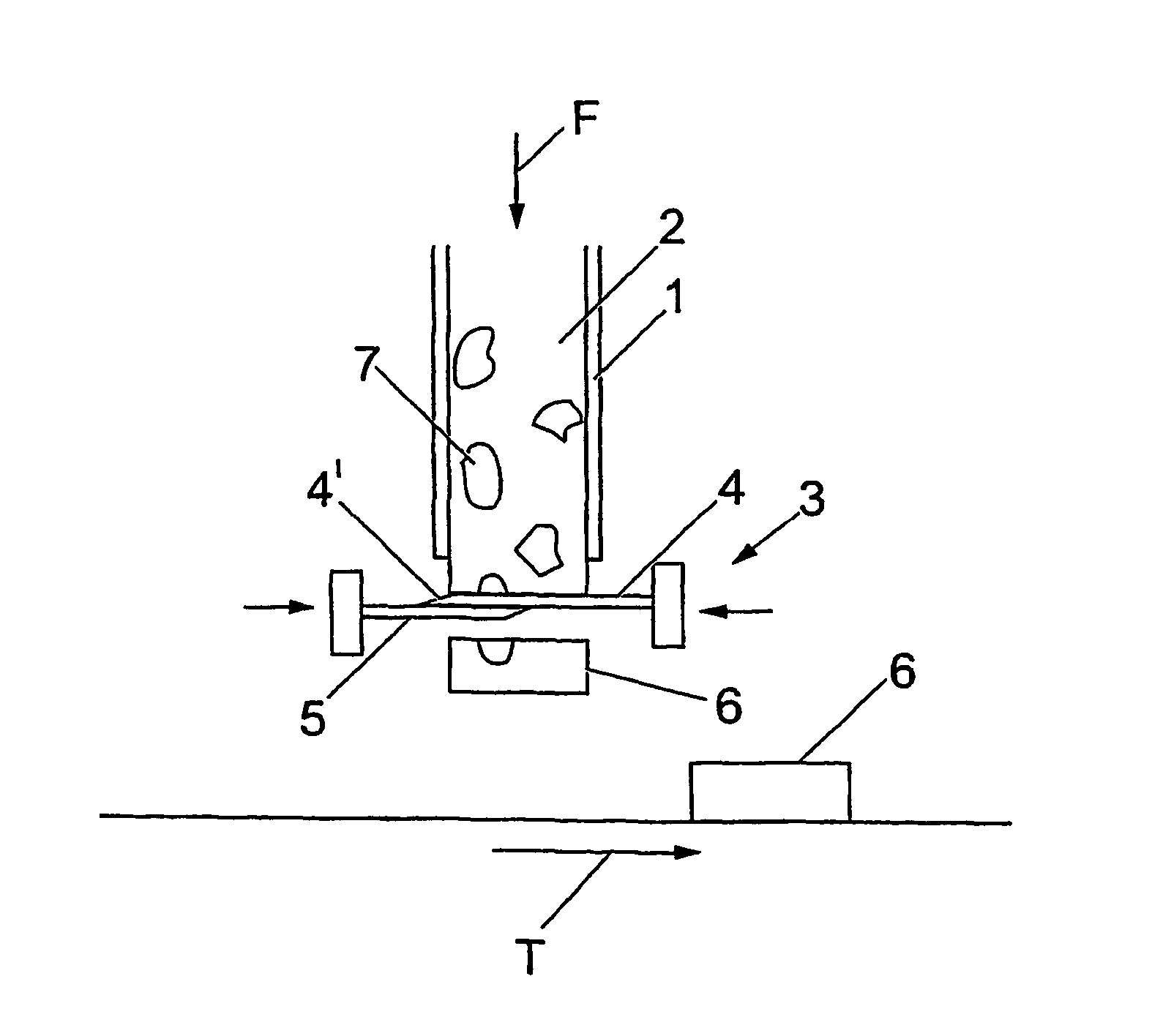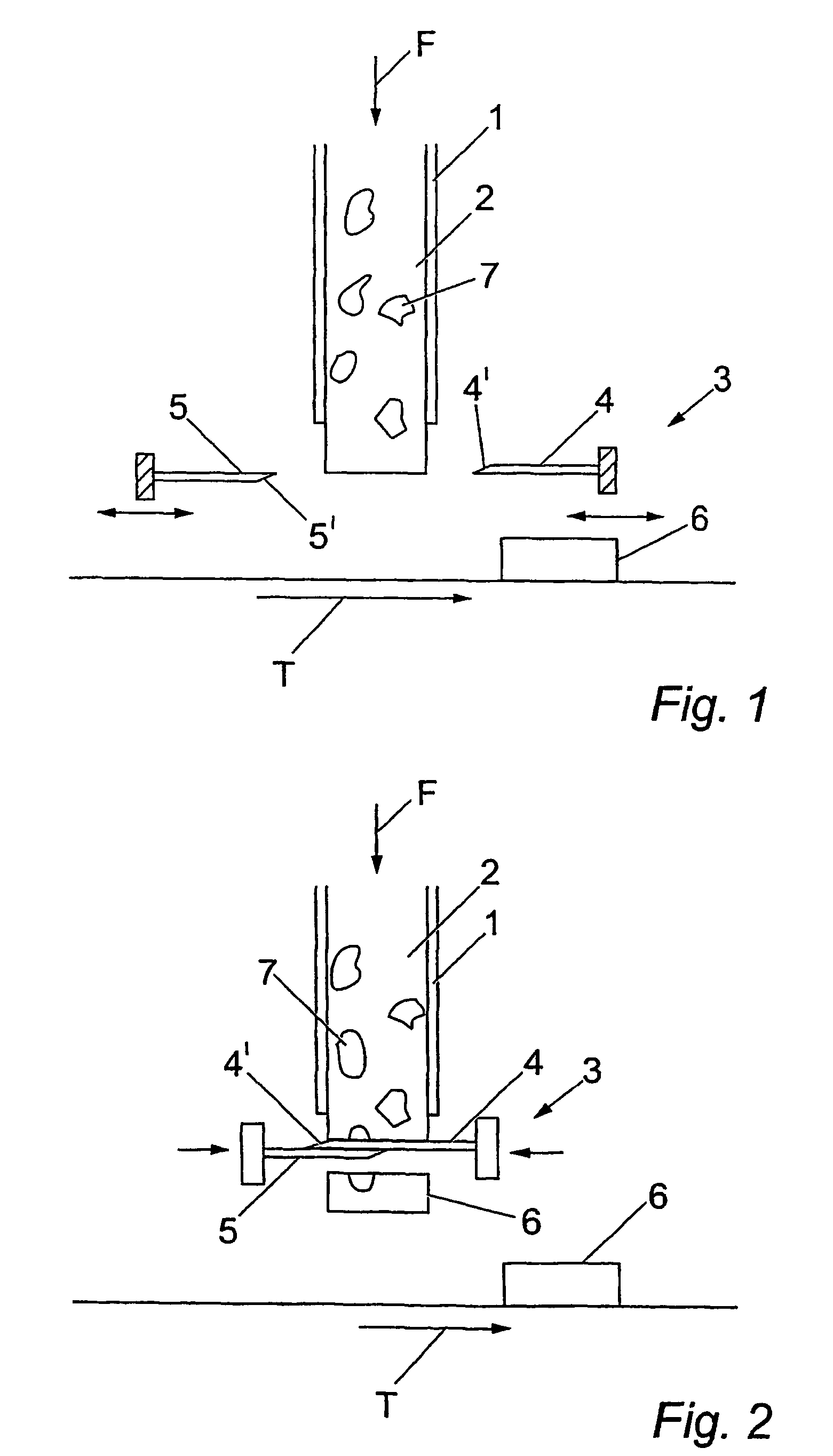Device and method for through-cutting of an extruded ice mass
- Summary
- Abstract
- Description
- Claims
- Application Information
AI Technical Summary
Benefits of technology
Problems solved by technology
Method used
Image
Examples
Example
[0022]FIGS. 1 and 2 show a device for through-cutting by a shearing of an extruded ice mass according to a preferred embodiment of the invention. An ice cream mass 2 is shaped by extrusion out of a nozzle 1, which comprises a pipe section with a predetermined cross-sectional shape. The ice cream 2, having a high viscosity, is forced out of the nozzle 1 with an essentially constant flow velocity F. Immediately after the outlet of the nozzle 1, a through-cutting device 3 is arranged which comprises an upper first knife 4 and a lower second knife 5. The two knives are arranged in parallel so they can be moved in separate and planes, which preferably are orthogonal with respect to the flow direction of the ice mass, however in such a way that the cutting planes of the knives are essentially the same. In FIG. 1, the knives 4, 5 are shown in their inactive positions, and in FIG. 2, they are shown in their projected positions. As shown in the figures, the ice cream 2 may contain solid ingr...
PUM
| Property | Measurement | Unit |
|---|---|---|
| Length | aaaaa | aaaaa |
| Mass | aaaaa | aaaaa |
| Velocity | aaaaa | aaaaa |
Abstract
Description
Claims
Application Information
 Login to View More
Login to View More - R&D
- Intellectual Property
- Life Sciences
- Materials
- Tech Scout
- Unparalleled Data Quality
- Higher Quality Content
- 60% Fewer Hallucinations
Browse by: Latest US Patents, China's latest patents, Technical Efficacy Thesaurus, Application Domain, Technology Topic, Popular Technical Reports.
© 2025 PatSnap. All rights reserved.Legal|Privacy policy|Modern Slavery Act Transparency Statement|Sitemap|About US| Contact US: help@patsnap.com



